For me, photography is more of a hobby than a full-time job. Selling my photos is just a side gig, when I can get extra cash without devoting much time or effort.
When I decided to try selling photos online, I was astounded by the number of marketplaces and websites claiming to be the best place to sell photos and stock videos. It was rather hard to figure out where to start. I tested a few platforms and put together a list of the best ones so you can make money doing what you love.
Getting everything set up took quite a bit of time. I spent a few days uploading my photos, tagging them with the right keywords, and writing detailed descriptions. After that, it was a waiting game to see how they'd do. In the first month, my earnings were hit or miss across the different platforms.
| Website | Image requirements | Royalty | My monthly earnings | |
|---|---|---|---|---|
|
Adobe Stock |
JPEG Sharp by viewing them at 100% 4-100MP |
33% |
$112/150 images |
|
|
Shutterstock |
JPEG, TIFF 4-50MP |
15-40% |
$96/150 images |
|
|
Alamy |
JPEG File size of over 17MB (when open) Mobile phone images not supported |
40-50% |
$53/100 images |
|
|
iStock |
JPEG 3-256MP |
15-45% |
$47/100 images |
|
|
500px |
JPEG 3000px on the longest side Does not have any watermark |
25-60% |
$35/100 images |
When looking for the best place to sell photos online, I spotted a few things that affect whether someone buys your content.
First, images that are high-quality and unique are usually more interesting to the audience. Top-notch, in-demand images usually attract more buyers. Also, the platform you choose makes a difference. Some sites charge higher prices or offer better commissions.
Keeping up a steady pace and displaying top-notch photos can also help earn more money. If you regularly upload a variety of catchy pictures, you have higher chances of selling them. It is paramount to have a solid portfolio and connect with your audience. Thus, you can have more returning customers and good recommendations, which is also crucial for stable profit.

I’ve selected Adobe Stock because photos featured on the platform are compatible with Adobe software. If you have already uploaded your photos to Adobe Stock, you can still sell them on other marketplaces. There’s no requirement for exclusivity on this platform. In addition, its customer support team is really helpful.
The royalty rate here is also rather high. Adobe Stock gives a 33% cut of the profits. As you move up and hit specific targets, your share can grow. I pocketed $0.33 for every sale.
The most noticeable drawback of this online photo seller is that you will have to face many competitors, including professionals and experienced photographers who specialize in the same area. For a newbie, it’s quite difficult to grab the attention of potential customers.
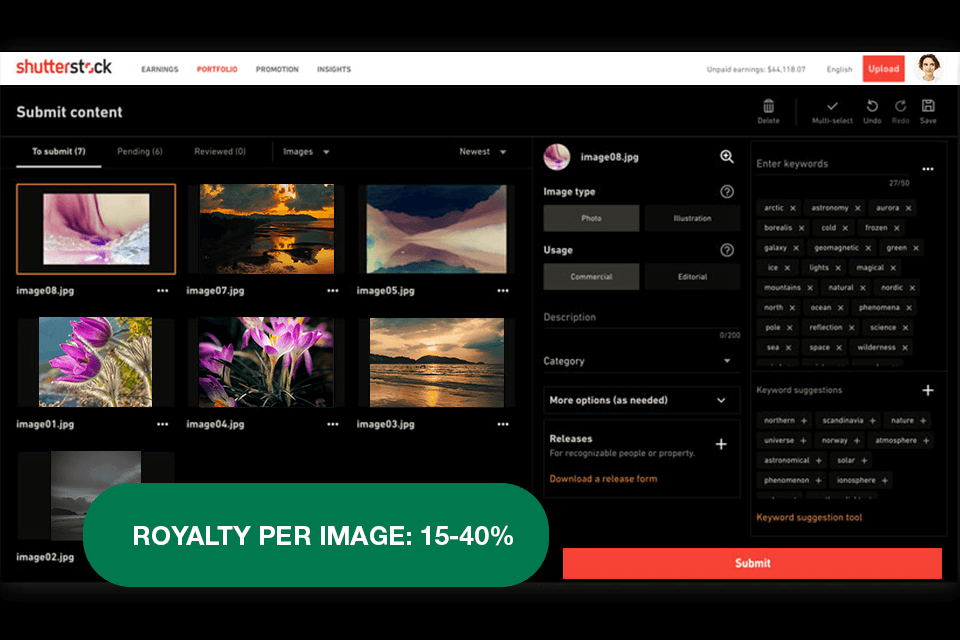
With almost 60 thousand people browsing each month, Shutterstock let me earn roughly $100 from 150 of my snapshots. The price for each photo varied, ranging from $0.10 to $10. All in all, depending on how many photos are sold monthly, you can make about 15-40% of what the buyer shells out.
Shutterstock creates many opportunities for anyone interested in learning how to sell photos. It easily permits contributors to upload their photos regardless of their quality.
The main disadvantage of Shutterstock is that contributors don't hold a copyright after selling their photos. Once they have been purchased, your photos will be distributed as the buyer sees fit and no one will know that you are the one who took them.
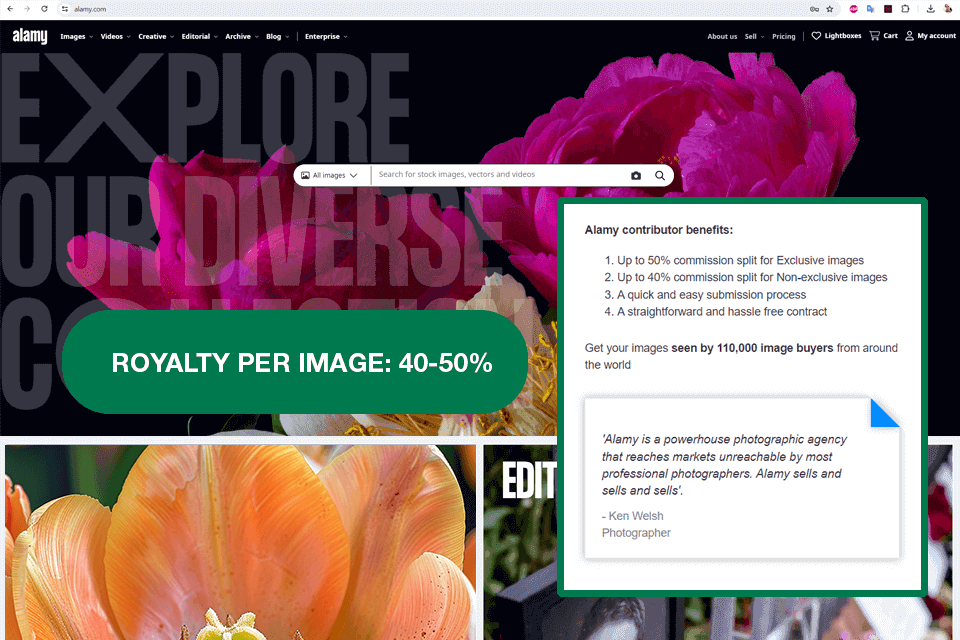
Currently, Alamy hosts more than 60 million images and clips. I was able to earn 20% from one photo on this platform, but in the future the earnings will increase. This site lets you earn 50% from each sold asset if you go over the $25,000 bar per year, 40% of every sold product if your yearly sales are in the $250-$25,000 range, and 20% for photographers who have earned less than $250 in the last year.
Based on what I've seen, you can make a few hundred bucks a month if you have carefully chosen a collection of 100+ images. With just a hundred pics, I made a bit over $50. The downside is that when you sell photos online on Alamy, you may wait longer compared to microstock sites. However, the higher prices they offer can make up for it.
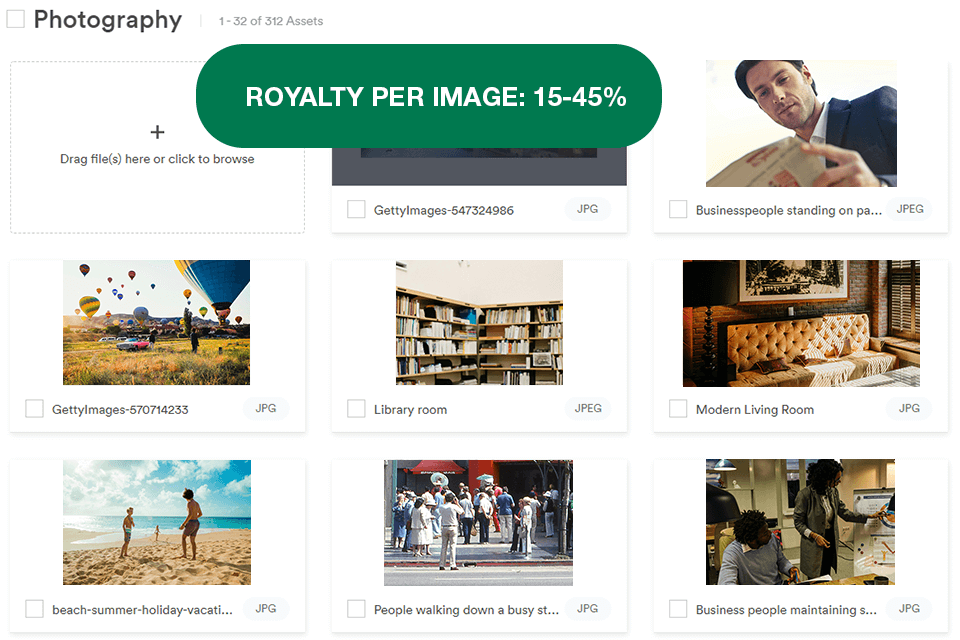
This popular platform is a microstock branch of Getty Images that is perfectly suited for beginners. I was pleasantly surprised that this marketplace also has various forums and educational resources that made selling stock photos easier for me.
The platform isn’t particularly demanding in regards to the photographer’s professional level, meaning you can easily implement and sell any creative photography ideas you have in mind.
The initial royalty percentage stands at 15% per download. That number can rise to 45% if your work is popular enough. I made about $ 50 on this platform. What's cool is that if you choose to sell your pics exclusively on iStock, they'll bump up the minimum royalty rate to 22%. By uploading your images, you accept a contract with a 30-day notice period.
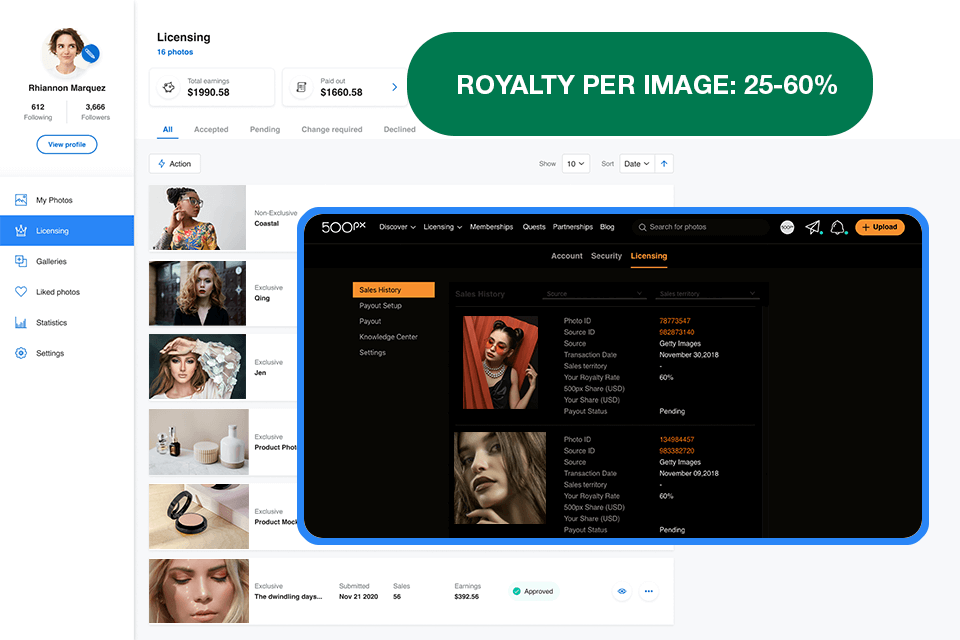
This platform can suit those looking for a place for selling photos online for beginners free of charge. Even the free subscription allowed me to reach out to a community of over 13 million people. However, I recommend paying for the premium membership that covers advertising options. It helped me maximize the chances of selling my photos.
The key advantage of 500PX is that it has photo selling apps, which provide both sellers and buyers with the most convenient means to access the marketplace. Nevertheless, users are allowed to upload only 20 photos a week. It could be a drawback for any photographer who has many pictures.
On the flip side, 500PX offers very generous royalties — I was able to earn $35 per month by posting 100 photos on the platform. Premium contributors receive up to 100% royalties while free plan photographers can get up to 60% for non-exclusive images.
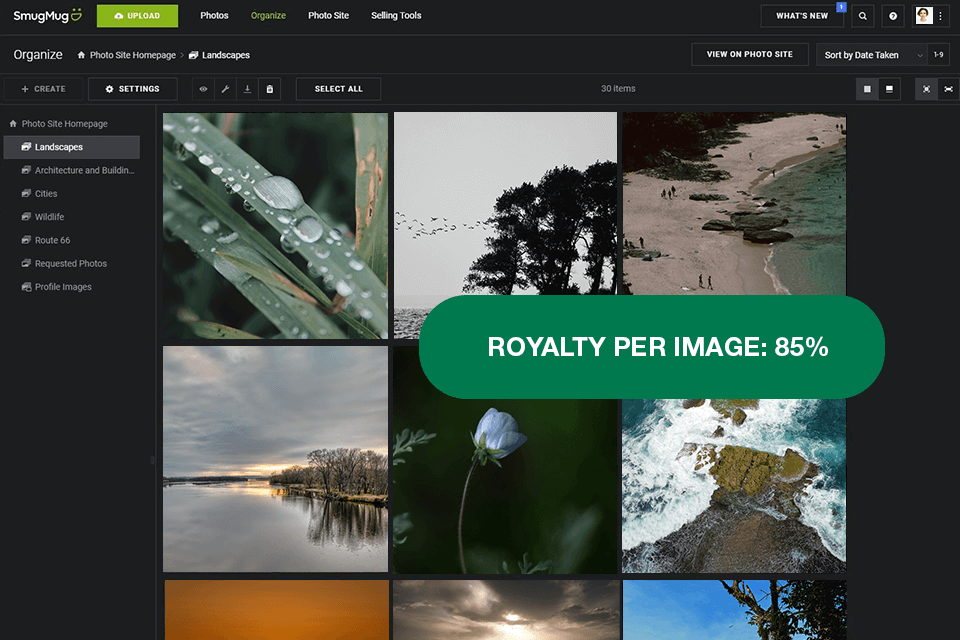
I could sell both photo prints and digital downloads on this platform. The highlight of SmugMug is their collaboration with different print labs, so you can order traditional prints or other products. Images can be printed on almost anything, from metal and glass to keepsakes.
To tap into the selling perks, you'll need to sign up for a plan, which costs $28 per month. Contributors can keep 85% of their earnings.
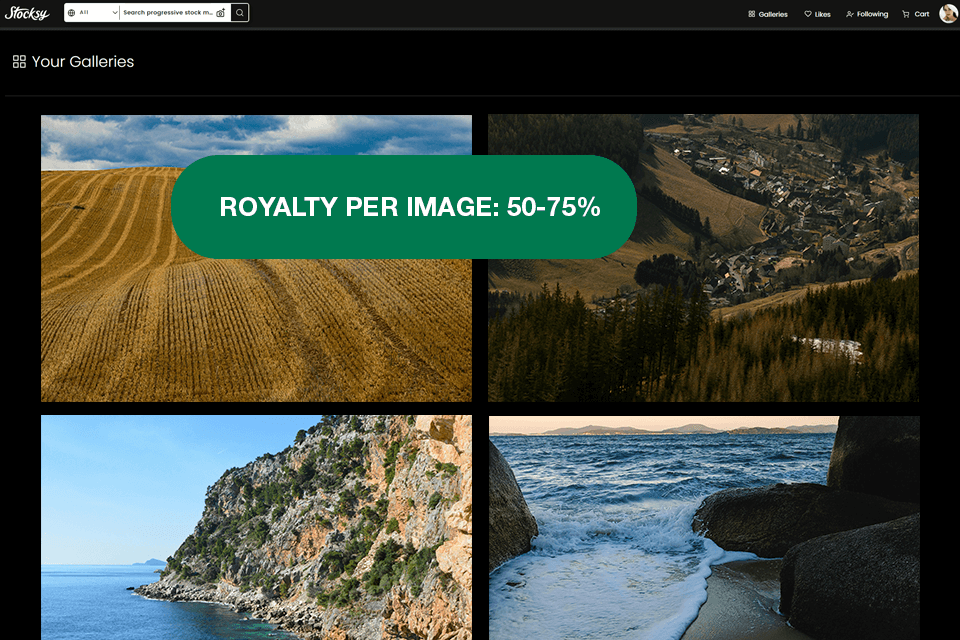
For me, Stocksy is one of the trickiest websites for photographers to sell photos due to its sky-high quality standards. They only want to deal with true professionals with perfect photos. However, if you manage to pass their selection process, you’ll become their corporate employee and you can even weigh in on how the platform is managed.
This service offers very high royalties that are available in two options: 50% on standard royalty licenses, and 75% on extended licenses.
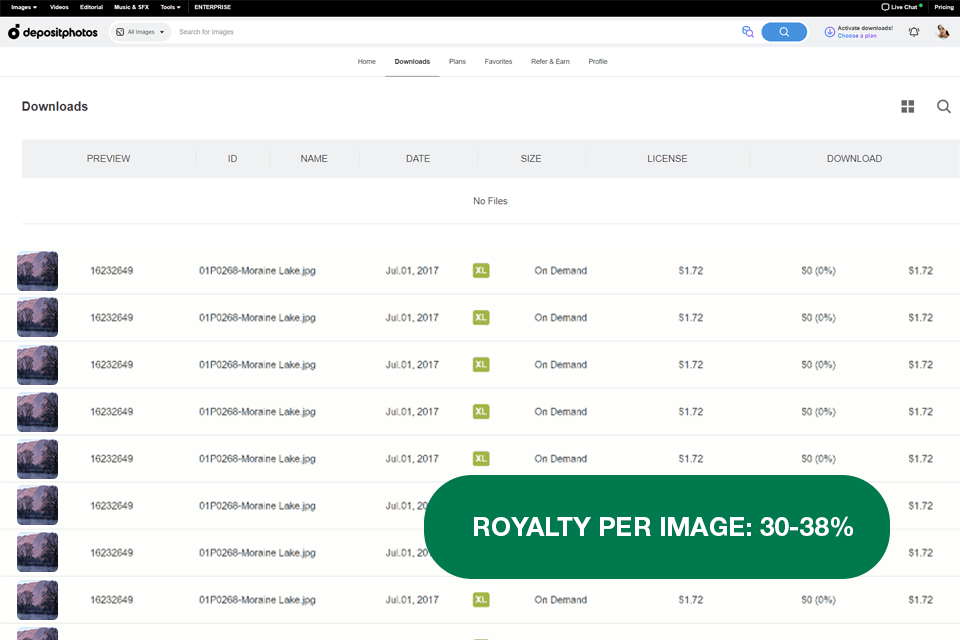
This online marketplace has an enormous library of visual content. The platform hosts images from more than 100,000 users and is frequently used by global brands like Warner Bros., TripAdvisor, Subaru, etc.
Depositphotos offers royalties in the 30% to 38% range depending on the contributor’s status, experience level, and license type.

Etsy is mostly known as a place to sell handmade items and various aesthetic accessories and items. If you decide to sell photos on Etsy, expect to get a lower number of searches compared to specialized websites where to sell photos online.
However, Etsy is still a worthy consideration since you only need to pay 5% of the transaction cost while other platforms will have you pay between 30% to 50%.
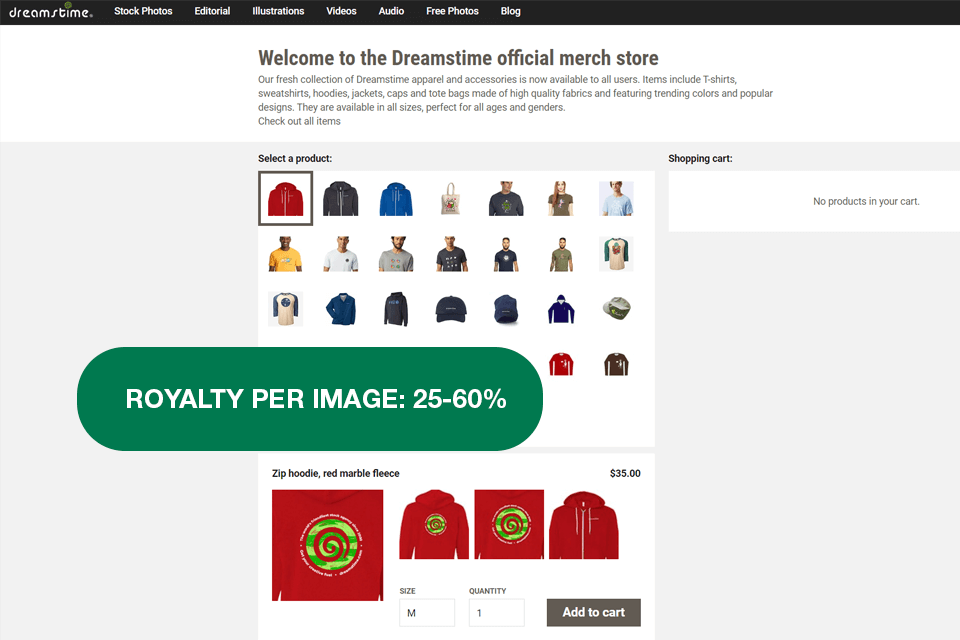
This marketplace is among the best photo selling websites due to its high payouts. That said, Dreamstime requires a high level of dedication from its members. You’re supposed to have at least 70% of your portfolio on the platform for 6 months or longer.
You can upload any images you take, regardless of whether they were taken with a professional camera or your camera phone. Non-exclusive members can receive 25%–50%, while exclusive images generate a royalty of up to 60%. This site also lets you earn some cash by referring both fellow photographers and potential customers.
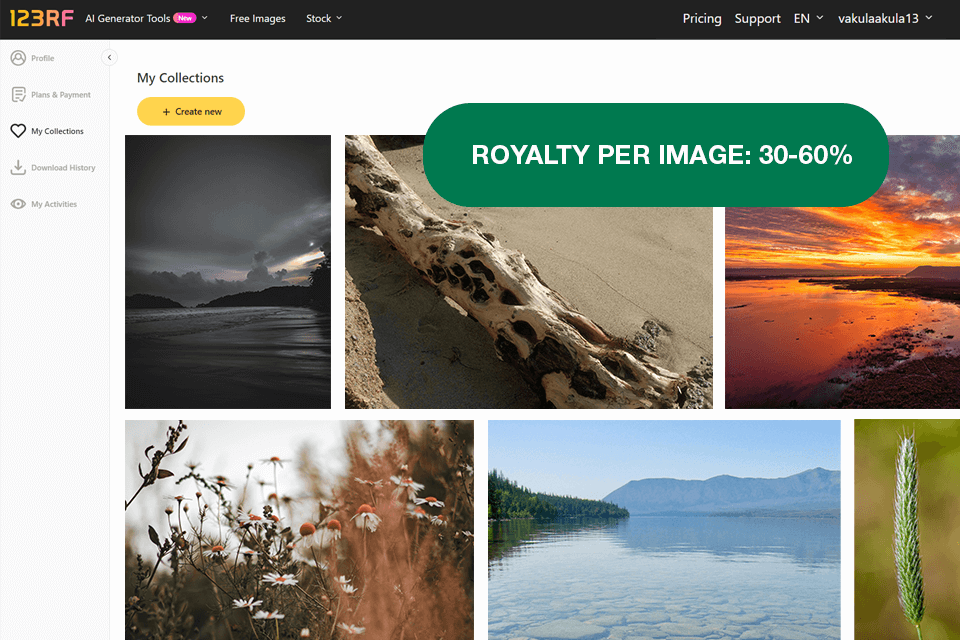
All the images you upload to this marketplace are non-exclusive, meaning you can use them along with other platforms. Additionally, 123RF will advertise your content to more than 5 million potential clients in 44 countries and 17 languages. After being approved on the site, you can start earning between 30% and 60% for every sale.
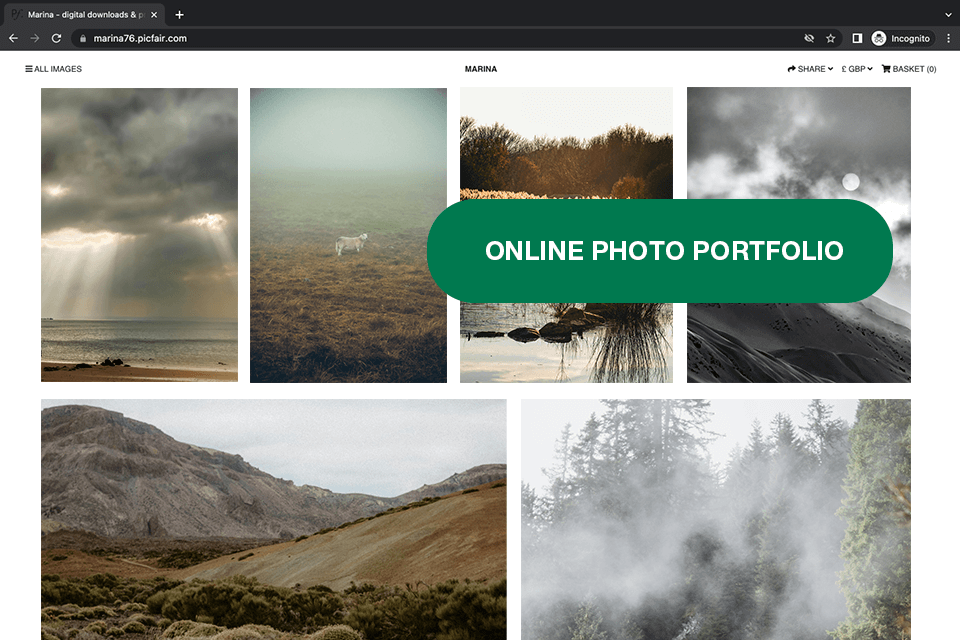
I included this platform on the photo selling website list because it puts me in the driver's seat of my online photo collection. I can decide how much to charge for my photos (both prints and digital downloads), while Picfair takes care of the money side. It also takes care of printing, shipping, and managing digital image licenses. I also liked that you can quickly create your own store for just $5 per month, paid yearly.
Decide which stock photography niche suits you best. Top photographers stick to a particular style or subject that flows through their work. You may focus on travel, fashion, food, or nature photography. The key thing is to maintain consistency across your photos. You can check out the demand for different topics by doing keyword research. You’ll see how often terms linked to your photos are searched. Google Trends is a straightforward tool for checking popular search terms. Keep an eye on trends to spot which image topics are picking up steam.
Grow your fan base. Using platforms like Instagram, you can reach a broad audience. Make the most of Instagram tools like Photoshop Express and Canva to track down the right accounts, join in on trending hashtags, and build up a group of potential customers.
You can also discover photo-sharing platforms that link you up with fellow shutterbugs. Therefore, you’ll be able to build a rapport with colleagues and even sell licenses for your digital stock photos.
Polish your photos. Keep in mind that stock photography sites demand top-notch quality, so editing your images can be time-consuming. I work in photo editing software for PC like Photoshop and Lightroom. Besides, I use Lightroom presets to speed up the image editing process.

In addition to selling photos online for money, you can try selling items like pillows and mugs with your pictures on them. I've mentioned Etsy before, where you can sell printed photos taken at various photography locations. The top method for selling photos online as physical prints or products is to collaborate with a nearby photo lab that delivers prints, or use a print-on-demand company to ship a variety of products featuring your photos.
A list of services that will help you make a unique product with your photo:
You can upload your beautiful golden hour photos or nature pictures and sell them as photo prints on paper or as physical items like mugs, T-shirts, and calendars.

Photo books are another great way to display your photography. If your pictures have a unique focus and are consistent, you're more likely to create an outstanding photo book with an engaging theme and sell your artwork online.
Programs for making photo books:
Whether you're capturing events or snapping fashion pics, there are loads of chances to spread the word about your photography services. You can advertise your skills on freelance platforms like Fiverr and Upwork. To do this well, you need to learn some photography marketing tips. It's also vital to think about networking locally, as you may need to meet clients face-to-face. I also actively run my LinkedIn profile. There I showcase my work and talk about the services I offer.
The top strategy is to offer them as stock images on third-party websites such as Adobe Stock, iStockPhoto, or Shutterstock. Selling your photos through Shutterstock or similar platforms is speedy, straightforward, and affordable.
A stock photography site, also called a stock agency, sells top-quality and exclusive images that you provide. The agency then licenses these images to clients and sells them for a fixed fee. As the photographer, you receive a royalty payment as compensation.
I've made about $350 in a month by selling photos on 5 different websites. You can earn between $0.25 to $2 per sale on microstock sites. Some top sellers say they make $5,000 or even more every month, especially those with unique content or unique prowess.